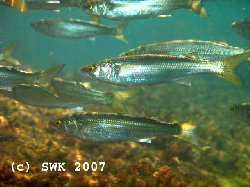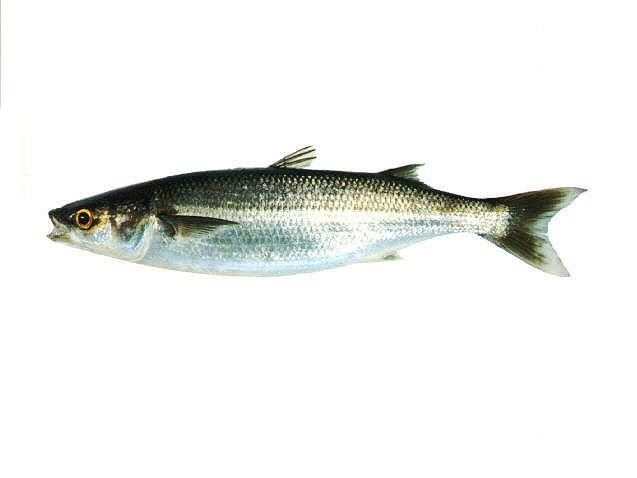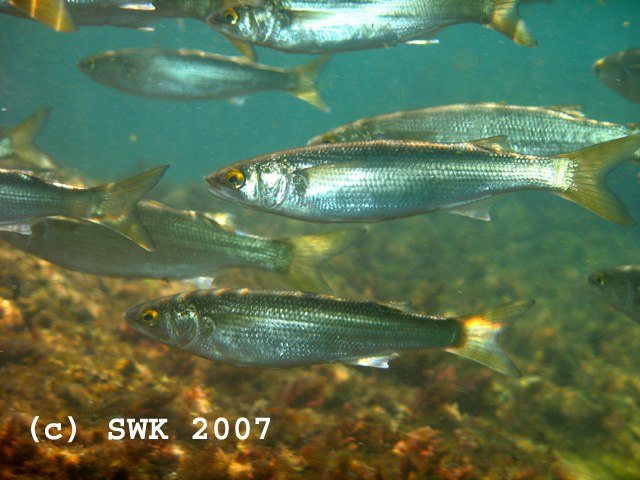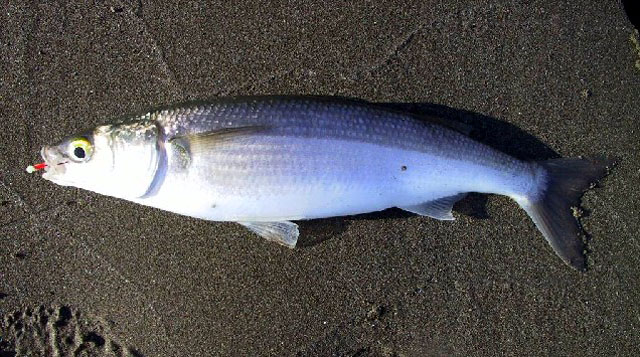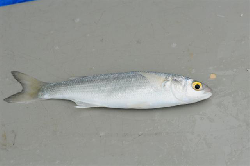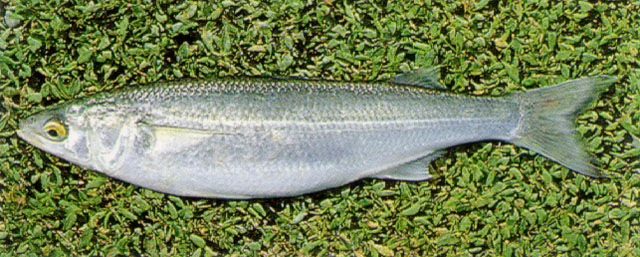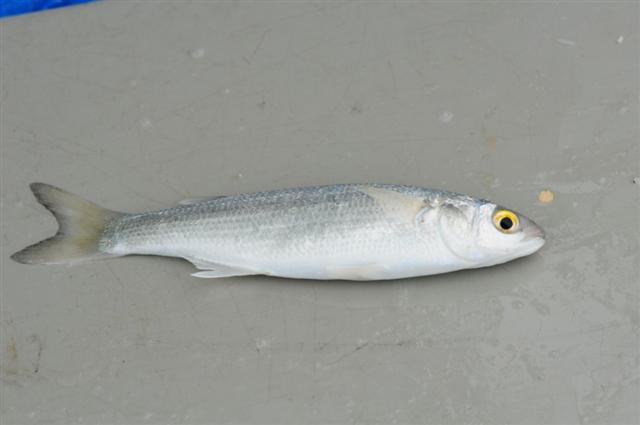Aldrichetta forsteri (Valenciennes, 1836)
Description
Dorsal spines (total): 5; Dorsal soft rays (total): 9; Anal spines: 3; Anal soft rays: 12. More pointed head and mouth than Mugil cephalus, and their eyes lack adipose (fatty) eyelids. Body scales are small (54-64 between gill opening and tail base) and thin, and are easily dislodged. 2 widely separated dorsal fins, the first with 4 spines and the second with 1 spine and 9 rays. These fish are olive or bluish brown above and silvery on the sides, and their eyes are bright yellow or golden. The fins have brown margins.
Common Names
No common names available.
Taxonomic Hierarchy
Kingdom: Animalia
Phylum: Chordata
Class: Teleostei
Order: Mugiliformes
Family: Mugilidae
Genus: Aldrichetta
Species: Aldrichetta forsteri (Valenciennes, 1836)
Climate Zone
Location
Biology
Found over sandy and muddy bottoms of coastal waters, bays, estuaries, and may ascend rivers into freshwaters (Ref. 9812, 44894). Adults inhabit brackish coastal lakes (Ref. 44894). Found in schools (Ref. 9812). Shoal-forming (Ref. 44894). They are omnivores, feeding mostly on benthic detritus, algae and small invertebrates. Oviparous, eggs are pelagic and non-adhesive (Ref. 205). Spawn in coastal waters in summer and autumn, probably in estuaries (Ref. 9812, 27012, 28470, 28707, 28708). Marketed fresh (whole gutted or fillets), smoked, salted or as roe (Ref. 3383).
Habitat
freshwater
